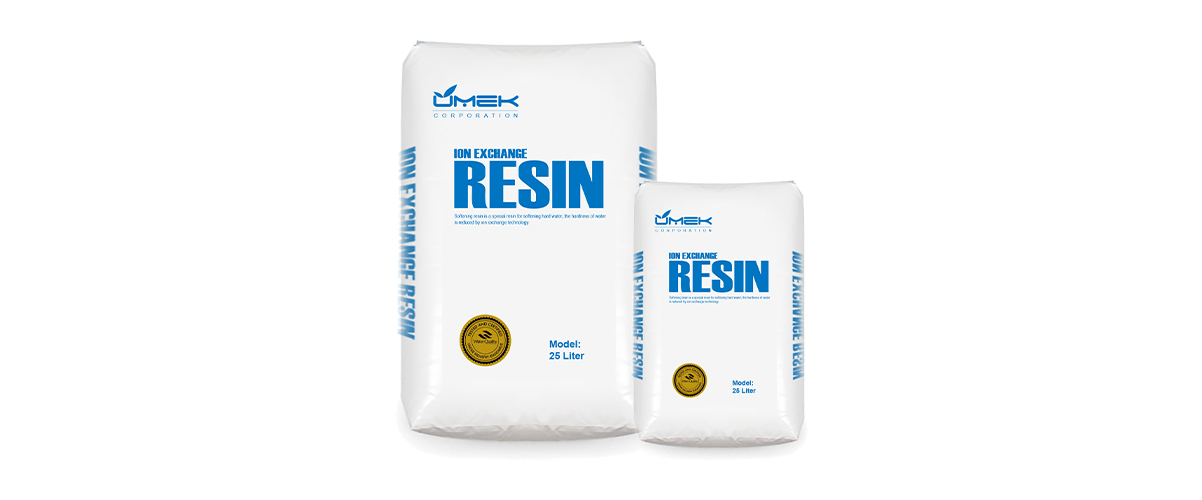close
Choose Your Site
Global
Social Media

loading
| Availability: | |
|---|---|
DESCRIPTION |
Sulfate removal using ion exchange resin is a highly efficient physical-chemical process for selectively removing sulfate anions (SO₄²⁻) from water or aqueous solutions. This process typically employs strong base anion (SBA) exchange resins, which are specially formulated with functional groups that have a high affinity for sulfate ions. The resin acts as a reversible adsorbent, where sulfate ions in the solution are exchanged for harmless ions (like chloride or bicarbonate) attached to the resin beads. Once the resin's capacity is exhausted, it can be regenerated with a brine (NaCl) solution or a chemical regenerant, restoring its removal capability and allowing for repeated use.
Mining & Metallurgical Wastewater Treatment: Critical for treating acid mine drainage (AMD) and process water by removing sulfate to meet environmental discharge regulations and enable water reuse.
Industrial Process Water: Protects reverse osmosis (RO) membranes and other equipment from sulfate scaling in industries like power generation, textiles, and chemicals.
Drinking Water Production: Redes sulfate levels to improve taste and meet potable water standards, particularly when treating groundwater with high natural sulfate content.
High-Purity Water Production (e.g., Boiler Feedwater): Essential for producing ultra-pure water in power plants and microelectronics by removing all ionic contaminants, including sulfate.
Operating Conditions
Service Flow Rate: 5 - 20 BV/h (Bed Volumes per hour).
Influent SO₄²⁻ Concentration: Optimal for concentrations up to several hundred mg/L.
pH Range: Effective across a broad range, typically pH 0 - 14.
Max Operating Temperature: 60°C - 80°C (for chloride form).
Regeneration
Regenerant: Sodium Chloride (NaCl) brine, typically at 5 - 12% concentration.
Regenerant Dosage: 80 - 200 g NaCl per liter of resin.
Regeneration Flow Rate: Slow flow, typically 2 - 5 BV/h.
Contact Time: 30 - 60 minutes.
Rinsing
Rinse Flow Rate: Slow rinse followed by a fast rinse at service flow rate.
Rinse Volume: Approximately 2 - 4 Bed Volumes, or until effluent chloride concentration matches influent level (measured by conductivity).
Performance Indicators
Total Capacity: ~1.0 - 1.4 eq/L.
Operating Capacity: Highly dependent on influent chemistry; typically 15 - 40 g SO₄²⁻/L of resin.
Breakthrough: End of service cycle is typically signaled by an increase in effluent sulfate concentration (e.g., > 10 mg/L).
Key Considerations
Competing Ions: High concentrations of nitrate (NO₃⁻) or bicarbonate (HCO₃⁻) can significantly reduce sulfate removal capacity due to competitive absorption.
Organic Fouling: Natural Organic Matter (NOM) can foul standard gel-type resins, requiring pre-filtration or the use of macroporous or specialty resins.
Silica Fouling: A risk when regenerating with NaOH under certain conditions, which can lead to irreversible silica deposition.
ADVANTAGES |

High Selectivity & Efficiency: Specific ion exchange resins can selectively target sulfate ions even in the presence of other anions, ensuring effective removal to very low concentrations.
Proven & Reliable Technology: It is a well-established, robust process with predictable performance, making it suitable for continuous industrial operation.
Cost-Effectiveness for Low/Medium Sulfate Loads: For specific applications and flow rates, it can be more economical than alternative technologies like reverse osmosis or precipitation, especially when high selectivity is required.
Regenerability & Reusability: The resin can be regenerated hundreds of times, reducing operational costs and minimizing chemical waste compared to single-use adsorbents.
Compact System Footprint: Ion exchange systems are relatively compact compared to other treatment methods, saving valuable space in industrial settings.
PACKING |
25Liter Bag
25kg Bag
50kg Plastic Barrel

OUR FACTORY |





| WHY UMEK |
With 28 years in water treatment and 16 years of international market experience, UMEK delivers one-stop solutions trusted in over 120 countries for efficient and reliable results. As the largest industrial water treatment wholesaler in the north, backed by 30+ professionals and a unique culture of mentorship and excellence, we are committed to providing high-quality products and customized services.
We partner with top-tier suppliers like Runxin Valve and Pentair, ensuring certified products with strict quality control. UMEK also offers a value-driven environment, comprehensive training, and growth opportunities, empowering employees and achieving mutual success. Choose UMEK – your partner in expertise, innovation, and sustainable development!

Sample Room
 Factory Gate
Factory Gate
 Factory Showcase
Factory Showcase
 Factory Showcase
Factory Showcase
 Factory Showcase
Factory Showcase
EXHIBITION |

Water Tech 2023

Water Tech 2023

Water Tech 2024

Canton Fair

Canton Fair

Canton Fair
| FAQ |
A1. Why choose UMEK for industrial water treatment solutions?
Q: With 28+ years in water treatment and 16+ years of global expertise, UMEK combines innovation, certified quality, and tailored services. As the largest wholesaler in the north, we deliver trusted solutions across 120+ countries, backed by 30+ professionals and partnerships with industry leaders like Runxin Valve and Pentair.
A2. Are UMEK products certified for international standards?
Q: Yes. All products undergo strict quality control and comply with global certifications (e.g., ISO, CE, WRAS). Our partnerships with top-tier suppliers ensure reliability and performance in diverse industrial applications.
A3. Can UMEK provide customized water treatment solutions?
Q: Absolutely. We specialize in tailored services, designing systems to meet unique client needs. Our team collaborates closely with you to ensure optimal efficiency, cost savings, and compliance.
A4. How does UMEK ensure product quality?
Q: Every product is rigorously inspected, tested, and certified. We work exclusively with vetted suppliers like Runxin Valve and Pentair, adhering to international quality benchmarks at every production stage.
A5. What industries does UMEK serve internationally?
Q: We serve 120+ countries across sectors like manufacturing, energy, municipal water, and agriculture. Our solutions adapt to regional regulations, climates, and operational demands for seamless global delivery.
A6. Does UMEK prioritize sustainability in its solutions?
Q: Yes. Sustainability drives our innovation. We optimize water reuse, reduce chemical waste, and integrate energy-efficient technologies to support clients’ environmental and ESG goals.
A7. What post-purchase support does UMEK offer?
Q: Clients receive lifelong technical support, including system maintenance guidance, troubleshooting, and employee training. Our mentorship-driven team ensures your operational success long after installation